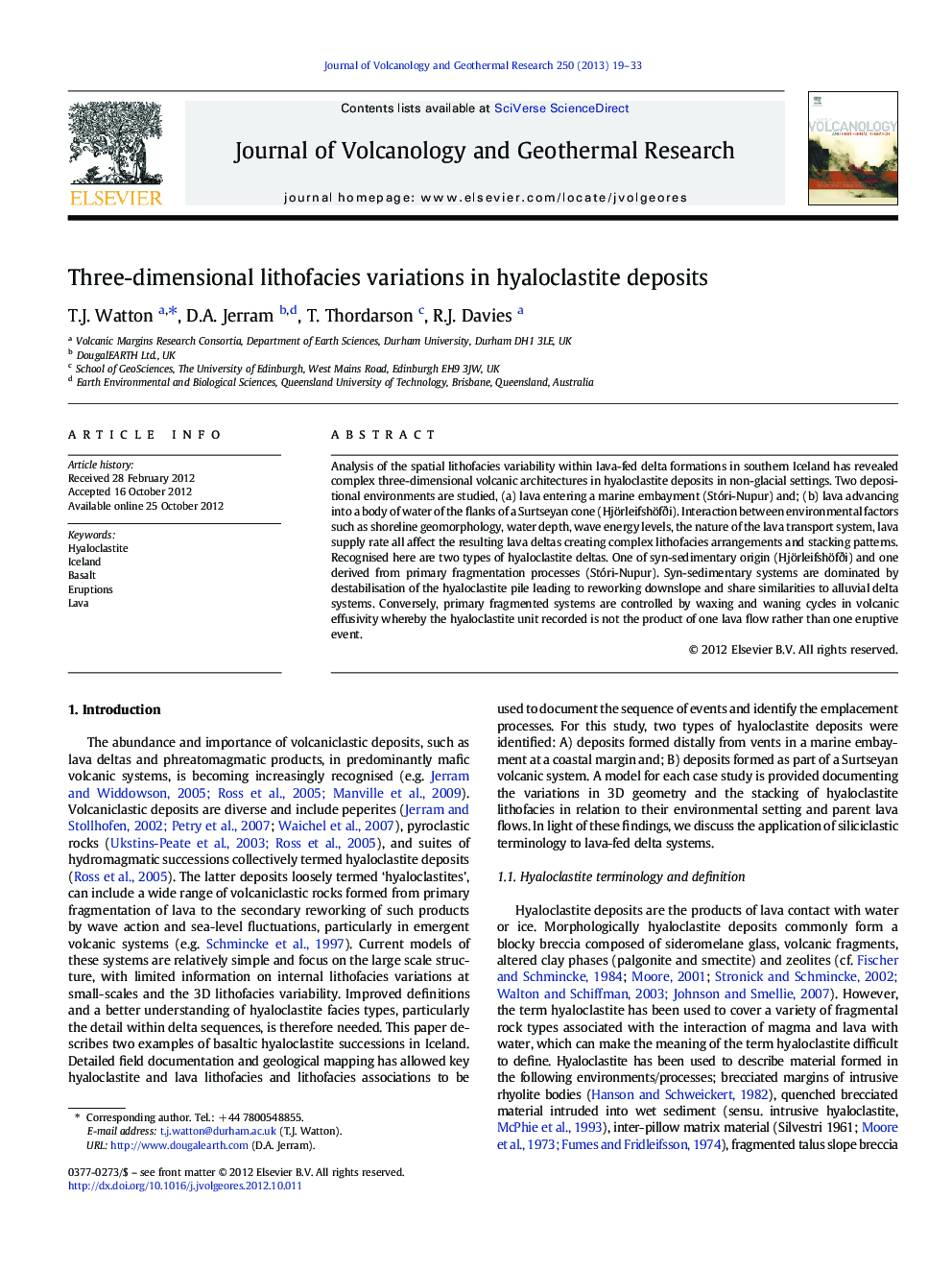| Article ID | Journal | Published Year | Pages | File Type |
|---|---|---|---|---|
| 4713231 | Journal of Volcanology and Geothermal Research | 2013 | 15 Pages |
Analysis of the spatial lithofacies variability within lava-fed delta formations in southern Iceland has revealed complex three-dimensional volcanic architectures in hyaloclastite deposits in non-glacial settings. Two depositional environments are studied, (a) lava entering a marine embayment (Stóri-Nupur) and; (b) lava advancing into a body of water of the flanks of a Surtseyan cone (Hjörleifshöfði). Interaction between environmental factors such as shoreline geomorphology, water depth, wave energy levels, the nature of the lava transport system, lava supply rate all affect the resulting lava deltas creating complex lithofacies arrangements and stacking patterns. Recognised here are two types of hyaloclastite deltas. One of syn-sedimentary origin (Hjörleifshöfði) and one derived from primary fragmentation processes (Stóri-Nupur). Syn-sedimentary systems are dominated by destabilisation of the hyaloclastite pile leading to reworking downslope and share similarities to alluvial delta systems. Conversely, primary fragmented systems are controlled by waxing and waning cycles in volcanic effusivity whereby the hyaloclastite unit recorded is not the product of one lava flow rather than one eruptive event.
► Hyaloclastite deposits from different environmental settings in Iceland ► Lithofacies models and correlation from hyaloclastite formations in each case ► New model of hyaloclastite deposition ► We conclude that hyaloclastite facies variation is due to lava morphology and environmental factors. ► Creation syn-sediment hyaloclastites and primary hyaloclastites.
